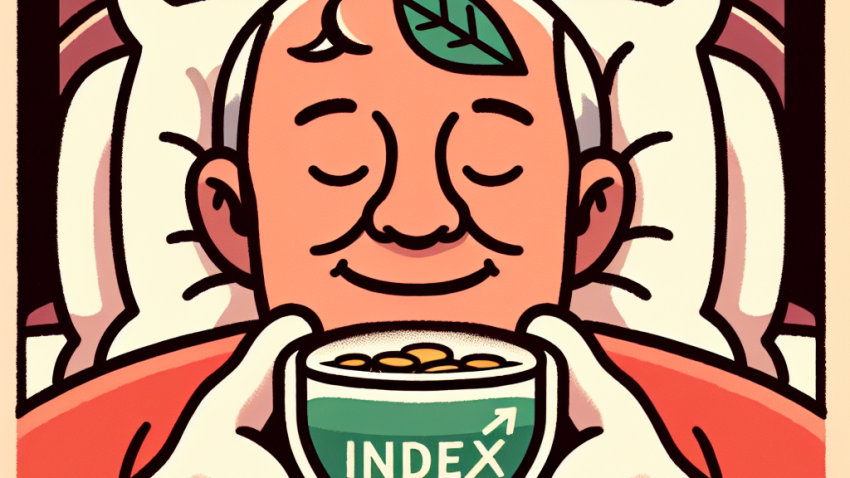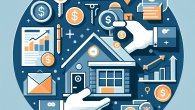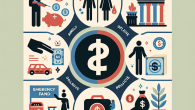
Why I Choose Index Funds Over Stock Picking (And Sleep Better for It)
How to Start Investing with Just $100: A Beginner’s Guide to Building Wealth
Let me guess — you’ve been scrolling through finance blogs, watching YouTube videos that end with “smash that like button,” and wondering how on Earth you can start investing when your bank account still has PTSD from that last takeout binge. Well, friend, you’re in the right place. I’m Rachel Simmons, and if there’s one thing I know (besides the best happy hour spots under $10), it’s how to turn a little into a lot — starting with what you’ve got.
If you’ve got $100 and a desire to stop living paycheck to paycheck, welcome to your first step toward financial independence. Let’s dive into how you can start investing without needing Wall Street connections or a finance degree.
Why Starting Small is Still Smart
So here’s the thing: a hundred bucks won’t buy you a mansion in the Hamptons, but it can definitely kickstart your journey to financial independence. The best investors in the world didn’t start with millions — they started with intention, strategy, and a pinch of patience.
Here’s why starting now, even with a small amount, is smarter than waiting:
- Time is your secret weapon. Compounding interest is like the Beyoncé of finance — powerful, unbothered, and better with time.
- Small investments build habits. Getting into the rhythm of investing regularly is better than going all in just once.
- You can learn as you grow. Starting small lets you test things out without risking your rent money.
Ready to Start? Let’s Set Some Ground Rules
Before we throw your hard-earned $100 into the stock market like confetti at a New Year’s party, we need to set the foundation. Trust me, your future self (the one drinking margaritas on a beach she actually owns) will thank you.
1. Eliminate High-Interest Debt First
If you’re carrying credit card debt with an interest rate over 15%, it’s probably smarter to pay that down first. That’s because the “return” on paying off that debt is basically a guaranteed 15% — which beats most investments. Think of it as a risk-free recession-proof ROI.
2. Build an Emergency Fund
Before investing in stocks, make sure you’ve got some cash in the wings — at least 3-6 months of expenses is ideal. But if you’re just starting and have $0 in savings, consider keeping $20-$30 in a high-yield savings account accessible for emergencies. It’s not sexy, but neither is living off instant noodles because your car broke down.
3. Set Clear Financial Goals
Ask yourself: What am I investing for? Retirement? A house? Freedom from that 9-to-5 job you barely survived this morning? Knowing your goal will guide your strategy. And trust me — nothing motivates you quite like picturing your boss’s face as you hand in that resignation letter.
Where to Invest Your First $100
Now that you’ve got your mindset (and maybe some mac ‘n cheese in the slow cooker — because budgeting doesn’t mean boring), let’s break down where your first hundred dollars can go.
1. Index Funds Through a Robo-Advisor
Robo-advisors like Betterment or Wealthfront offer automated, low-cost portfolios. You answer a few questions about your goals and risk tolerance, and they take care of the boring stuff, like asset allocation. Most of them let you get started with as little as $10 to $100.
2. Fractional Shares
Always wanted a piece of Apple or Tesla but don’t have $1,000+ lying around? Enter fractional shares. Platforms like Robinhood, Fidelity, and M1 Finance let you invest partial amounts in high-priced stocks. You can literally invest $5 in Amazon and not have a panic attack.
3. ETFs (Exchange-Traded Funds)
Think of ETFs as a sampler platter — one investment, multiple stocks. For beginners, that means low risk, high diversification. You can invest in ETFs that follow entire market indexes (like the S&P 500), sectors you believe in (think tech or green energy), or even specific themes like female-led companies.
4. High-Yield Savings Accounts or CDs (for Ultra-Cautious Newbies)
Not ready for the stock market rollercoaster? No shame in that. A high-yield savings account or certificate of deposit (CD) can offer returns higher than your traditional bank. Just be sure to avoid fees, and read the small print like it’s your ex’s text history — carefully and with caution.
Best Apps to Use for Micro-Investing
You guessed it — there’s an app for that. Actually, there are several. Here are my favorites for investing with small amounts (aka your $100 starter kit):
- Acorns: Rounds up your purchases to the nearest dollar and invests the change. Great for passive investing.
- Robinhood: No commissions, fractional shares, clean design. But make sure you understand what you’re investing in — it’s not a game.
- M1 Finance: Perfect for creating custom portfolios, also supports fractional shares.
- Fidelity or Charles Schwab: For traditional investors who want great customer service and long-term options.
Rachel’s $100 Investment Strategy for Beginners
If I were starting today with just $100, here’s exactly what I’d do:
- $50 into a low-fee S&P 500 ETF via a platform like Fidelity or Robinhood.
- $30 into a high-yield savings account to kick off my emergency fund.
- $20 into a fractional share of a company I love and believe in — think Apple, Tesla, or even something edgy like Airbnb.
This setup gives you growth potential, safety, and motivation — because there’s something about owning a piece of your favorite brand that makes you care just a little more about being financially savvy.
Final Words: It’s Not About the Amount, It’s About Momentum
Look, I get it — $100 doesn’t feel like a game-changer. But it is. Because taking control of your money, deciding to invest in your future, and starting today puts you in the top 10% of people who say, “I’ll figure this out,” and actually do.
And the best part? You’re not doing this alone. Stick with us here at Financeone and check out more guides in our Personal Investing & Financial Independence editoria. Got questions or want to share your first investment win (or fail — we’ve all been there)? Drop us a message through our contact form. I can’t wait to hear from you.
Now go get started — your financially free future self is already raising a glass to you.









Leave a Reply